Dear Lifehacker, I can’t decide between sitting in a regular desk chair, bicycle desks. What, really, is the best option for my productivity and health? Thanks, Desk Jockey
Dear DJ,
There are more ways to hold your body while you work these days than ever — and that’s a good thing. The standard task chair isn’t perfect for everyone, but for some it still has merits (even though sitting for long periods of time has been deemed unhealthy lately). After trying out just about every desk arrangement possible, here’s what I think you should know about your options.
Sitting: The Most Comfortable Choice For Limited Amounts Of Time
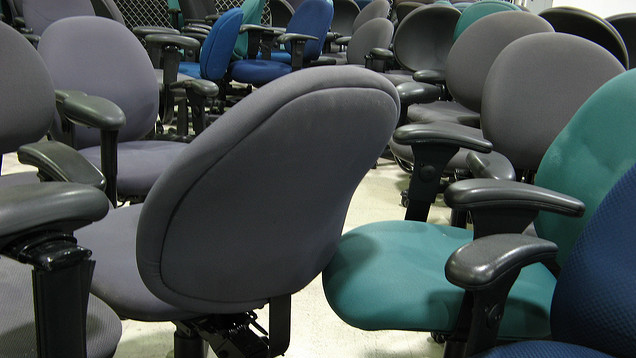
We’re all used to sitting and it feels natural to work at your desk in a chair, since that’s how we’ve all been trained since kindergarten. Given the right chair, you can work for hours at a time before you realise you’ve been sitting for so long. That’s both a good and a bad thing.
I’ve sat in generic desk chairs, high-end ergonomic chairs, chairs with built-in massagers (in the name of science, really!), and even exercise ball chairs…all to discover one thing: No matter how comfortable or well-designed your chair is, you need to get your butt out of it quite often. I hadn’t truly realised that until I started trying the other desk options (standing and so on). Switching strategies made me realise how stationary I was for so long in my desk chair, and how much my body really wanted to move and not be confined. Still, for long sessions at the desk, few things beat an ergonomic chair.
To counteract the ill effects of sitting so much, however, you should get up at least once an hour and also get about 30 minutes of activity daily. If you can sit fewer than 3 hours per day (including sitting on the couch in the evening), all the better.
Pros: You can work for long periods of time while seated, there are tons of chairs to choose from to find the right fit (all at different price points), and sitting is the default mode in most office environments (no cubicle desk hacks necessary).
Cons: It’s easy to miss much-needed breaks, and your body might pay for that.
Reclining: Perhaps A Better Way To Sit
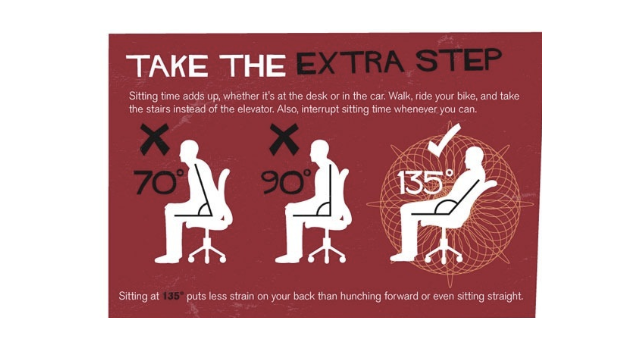
If you don’t want to switch to a standing desk but want to reduce the possible health hazards of sitting for long periods, sitting at an angle might do the trick for you. Crew co-founder Michael Cho killed his standing desk in favour of a reclined chair, based on evidence that leaning back, at about 135 degrees, is better for your spine than leaning forward or sitting upright.
After seeing a La-Z-Boy recliner turned into a desk chair, I dragged an old recliner into my office, put an ottoman under the desk so I could put my legs up, and locked the chair into recline mode. It hasn’t been the panacea for my poor legs (previously standing all day) I thought it would be. For one thing, it’s hard to get up from this, not just because it’s so comfy and makes me lazier, but it’s just an awkward arrangement. The chair doesn’t swivel, and I need to be close enough to the desk to see the screen, so there’s just a narrow space for getting in and pit. More importantly, while leaning back, it puts the monitor farther away than optimal, so I find myself craning my neck forward to see the screen. My lower back feels great, but my neck and shoulders do not.
All that said, with a better chair that rolls away and a different setup (perhaps some sort of desk surface that can roll the screen closer to you), this could be the best compromise between sitting all day and standing all day. You’ll still have to get daily exercise and get up out of the chair often, though.
Pros: Might be healthier for your back than regular sitting, and it’s pretty comfortable (except for encouraging neck craning). You don’t even have to get up to take a nice nap.
Cons: Might not be great for your neck and shoulders, and not just any chair or desk will work with this arrangement.
Standing: A More Active Way To Work
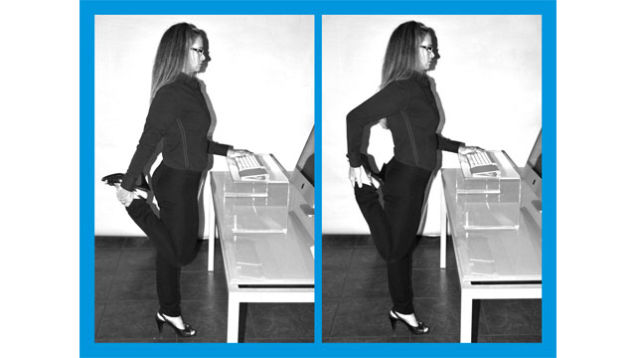
After all the negative news about sitting, standing desks are all the rage these days. Lifehacker founder Gina Trapani reported her experience after a year using a standing desk, and Lifehacker Australia editor Angus Kidman is a convert. I found mine to be much the same.
After hacking my desk into a standing one, I found that it was easier for me to think clearly compared to while I was sitting. I think it’s because I like to move when I have creative energy — fidgeting or pacing or just adopting a different position, and a standing desk offers that freedom of space. There’s also more room to stretch and exercise throughout the day (I’m using FitBolt for the reminders and tips).
The downside is that it’s hard to maintain proper posture when standing for long periods of time. Your weight might shift too much one way, you’ll lean in farther than you should, etc. Also, going from sitting to full-on standing takes easing into, and standing for eight hours at a time isn’t healthy for you either (cue sore legs and tight calves). A few exercises can help, as can, simply, sitting down occasionally.
Pros: May be healthier than sitting non-stop (if you don’t stand non-stop), encourages more physical activity, which could boost mental activity.
Cons: Can be a pain if you stand too long, you have to hack conventional desks, not all workplaces are standing-desk friendly.
Running/Cycling: Fit In Exercise While Doing Passive Work
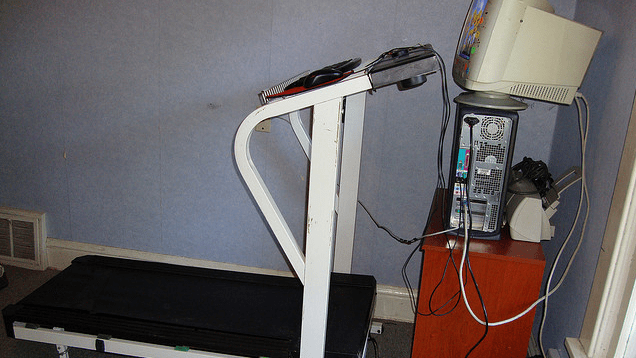
And then there are the fitness “desks” — treadmill or bicycle desks where you can work with your laptop or tablet while getting fit. The whole “killing two birds with one stone” thing is very appealing.
Combining exercise with computer work does work well — but that depends on the kinds of tasks you’re doing. Forbes reports that a recent study found workers who adopted a treadmill desk scored higher on productivity tests than previously, but previous studies found that things like typing, mouse clicking, and even solving maths problems declined when users tried treadmill desks.
I use my tablet on a treadmill while surfing the web for stories, and find that’s a good combination. It’s easy to swipe through articles while walking fast and it makes the time go by faster, but I don’t think I could type efficiently at that pace. So, if anything, a running or cycling setup may best serve as a complement to your main working mode.
Pros: Sneak in exercise, save time
Cons: Can’t do it all day, best for only certain types of tasks
In the end, I don’t think there’s one perfect solution, since all of these modes have their caveats. If you keep those downsides in mind, though, you can adjust your workspace for both comfort and ergonomics. For example, I’m ditching the recliner and getting an office chair designed with reclining in mind for those long writing sessions, but keeping my standing desk setup to switch to when I know it’s time to move. Try different options, and see what feels right for you.
Cheers
Lifehacker
Got your own question you want to put to Lifehacker? Send it using our [contact text=”contact form”].
Images: Bludgeoner86, Medical Billing & Coding, Standing Fit, cmcbrown
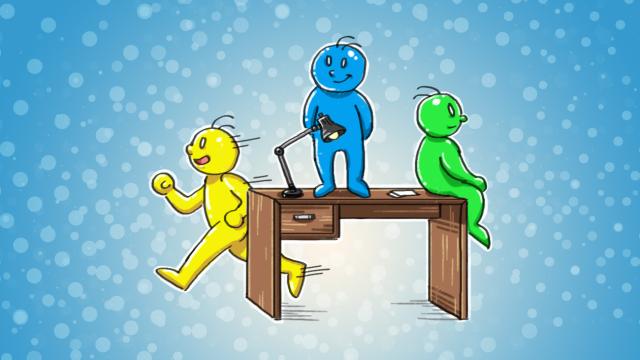
Comments